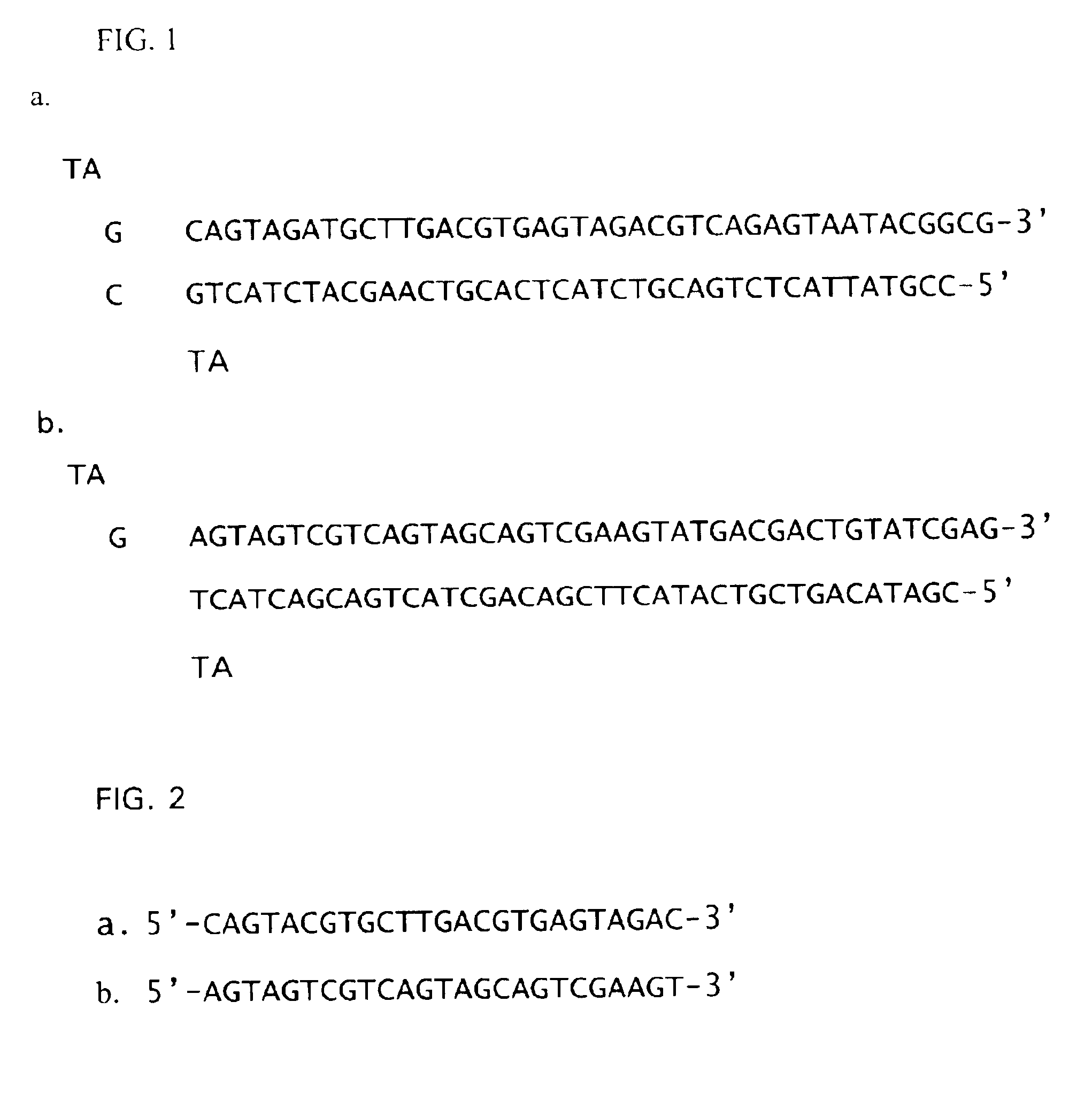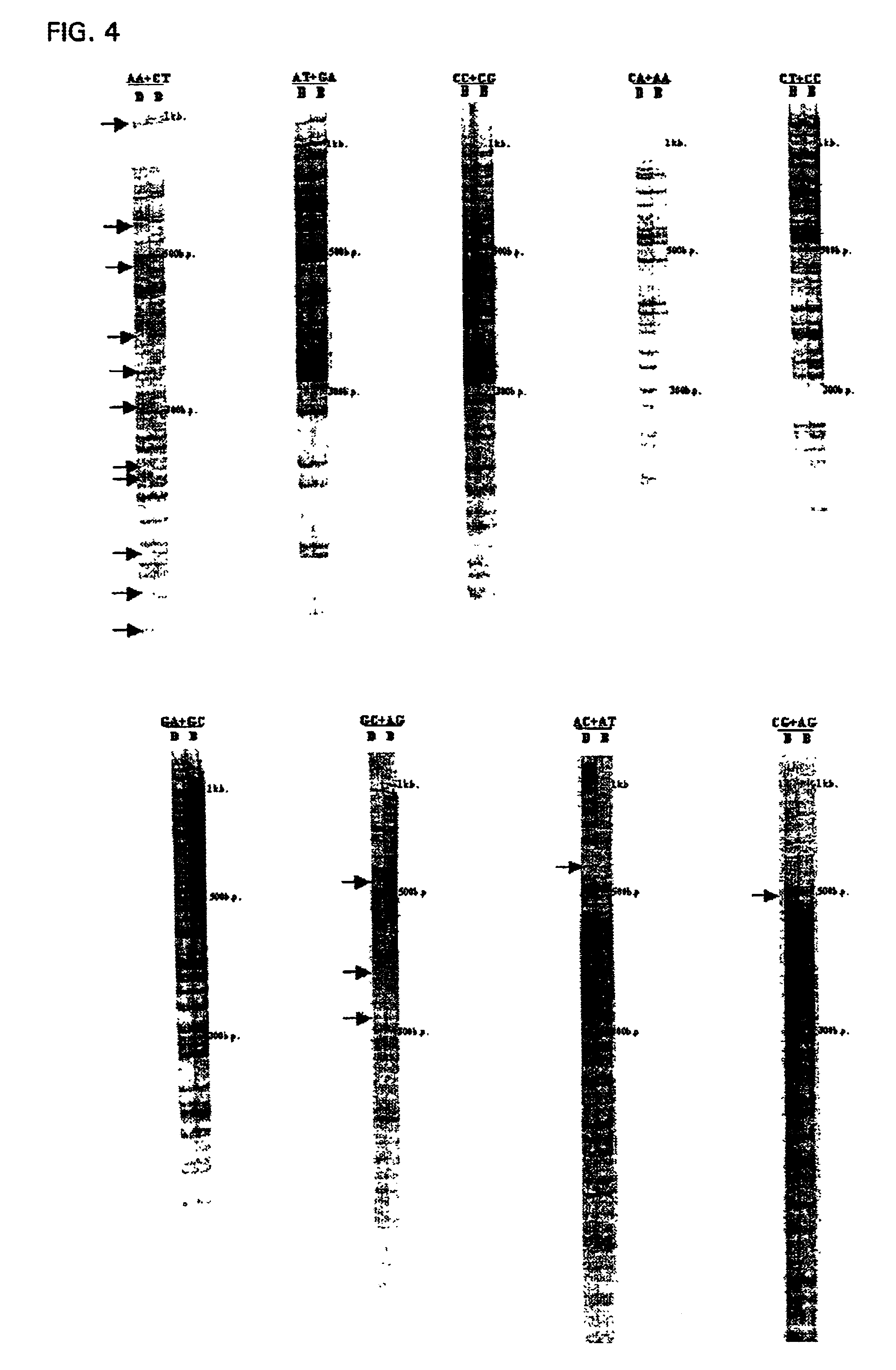Polymerase chain reaction of DNA of which base sequence is completely unidentified
a polymerase chain reaction and dna technology, applied in biochemistry apparatus and processes, organic chemistry, sugar derivatives, etc., can solve the problems of inability to complete amplification of full length dna or cdna of an organism through pcr process without missing any part thereof, difficult or complex order library technique, time-consuming and laborious process
- Summary
- Abstract
- Description
- Claims
- Application Information
AI Technical Summary
Benefits of technology
Problems solved by technology
Method used
Image
Examples
Embodiment Construction
[0035]Method for Selective Amplification of E. coli Genome
[0036]1) Fragmentation of E. coli genome by using an Hpy118III restriction enzyme of IIs type.
[0037]Whole genomes were separated from E. coli strain DH5a and BL21 respectively. 30 units of Hpy118III restriction enzyme were put into 10 μg of each genomes thus separated, the mixture thus obtained was added into buffer solution in pH 7.9 which contains 50 mM of acetic potassium, 20 mM of tris-acetate, 10 mM of magnesium nitrate and 1 mM of DTT to proceed the restriction enzyme reaction.
[0038]1—1) Fragmentation of E. coli genome by using an Hpy118III restriction enzyme of IIs type.
[0039]Whole genomes were separated from E. coli strain DH5a and BL21 respectively. 30 units of Hpy118III restriction enzyme were put into 10 μg of each genomes thus separated, the mixture thus obtained was added into buffer solution in pH 7.9 which contains 50mM of acetic potassium, 20 mM of tris-acetate, 10 mM of magnesium nitrate and 1 mM of DTT to pr...
PUM
| Property | Measurement | Unit |
|---|---|---|
| Alkalinity | aaaaa | aaaaa |
| Cohesive energy | aaaaa | aaaaa |
Abstract
Description
Claims
Application Information
 Login to View More
Login to View More - R&D
- Intellectual Property
- Life Sciences
- Materials
- Tech Scout
- Unparalleled Data Quality
- Higher Quality Content
- 60% Fewer Hallucinations
Browse by: Latest US Patents, China's latest patents, Technical Efficacy Thesaurus, Application Domain, Technology Topic, Popular Technical Reports.
© 2025 PatSnap. All rights reserved.Legal|Privacy policy|Modern Slavery Act Transparency Statement|Sitemap|About US| Contact US: help@patsnap.com



